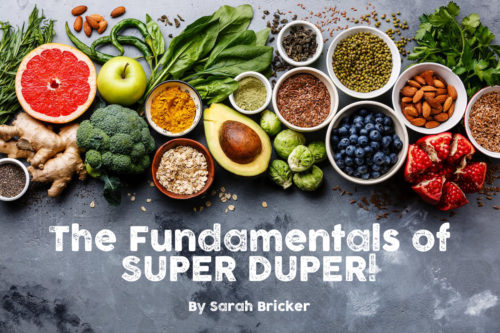 Is it just me, or do you also picture a noble blueberry flying in the sky with a bright red cape whenever you hear the term “Superfood”?
Is it just me, or do you also picture a noble blueberry flying in the sky with a bright red cape whenever you hear the term “Superfood”?
Although qualifications for Superfoods have not been regulated by the FDA, or any other organization for that matter, the term has been in use since the early 20th century, and has been accepted as any food that is exceptionally nutrient-rich, or has shown trends to heal a disease. In other words, not all produce is created equal.
Due to modern farming practices, our soil has been depleted of most nutrients, and the topsoil has been exhausted of its minerals and beneficial bacteria, which is what makes our produce healthful. Thus, creating a need for superfood consumption. But wait, there’s more…
Thomas Cowan, MD commented that our diets are much less diversified than in the days when we were foragers, or forced to eat locally and in-season. Our modern and convenient diets lend to a less-diversified spectrum of nutrients. Secondly, produce that we purchase from supermarkets have been raised to be more aesthetically appealing, with higher sugar content and less bitterness, which also means less nutrients than their heirloom predecessors. Lastly, these fruits and vegetables were also harvested weeks before their ripe dates, and traveled far distances before reaching your dinner table. This is another contributor to lower levels of nutrients in the food, and therefore lesser benefits to our bodies. One good way to combat this is to shop at your local farmers market! But that’s a blog for another day.
According to the Proceedings of the National Academy of Sciences, low levels of micronutrients can lead to early cellular aging and increased DNA mutation. These can lead to things like fatigue, hormone imbalances, poor immune function, weight gain, and increased risks of cancer and neurodegenerative diseases – sound like anyone you know? Thus, supplementation with a superfood, a multivitamin, and a mineral (and sometimes an Omega-3) is recommended to sustain health, as well as act as a cost-effective way to prevent nutrient deficiencies.
Local examples of superfoods are:
– Blueberries
– Broccoli
– Pomegranate
– Garlic
– Select Mushrooms
– Wheatgrass
– Fermented Kale
– Chia seeds
– Almonds
– Nutritional Yeast
Exotic examples of superfoods are:
– Cocoa (dark chocolate)
– Matcha Powder
– Tumeric
– Goji Berries
– Ginseng
The last wellness tid-bit we want to share with you about Superfoods is that they can never replace a super-balanced diet. Click here for the modernized food pyramid that you should be using.
At Stillpoint Family Chiropractic, we are passionate about the foods we eat. You’ve heard it before… “you are what you eat”! But like, seriously, you really are! How else do your skin cells regenerate every few weeks? Or your blood cells every few months? Where do you think the resources come from? Superfoods offer that little extra “Umf” we need to nurture our bodies, and nourishing our bodies with real, wholesome food is a form of self-love. And self-love is a fundamental step in holistic living! I hope you’re catching on to our mission. :)
Yours in Health,
SFC
The information provided by the Stillpoint Family Chiropractic Wellness Blog is not intended or implied to be a substitute for professional medical advice, diagnosis, or treatment. All content, including text, graphics, images, and information, contained on or available through this website is for general information purposes only. Stillpoint Family Chiropractic assumes no responsibility for its accuracy, and encourages its readers to confirm all details from alternate sources, and any and all content is subject to change without notice.
